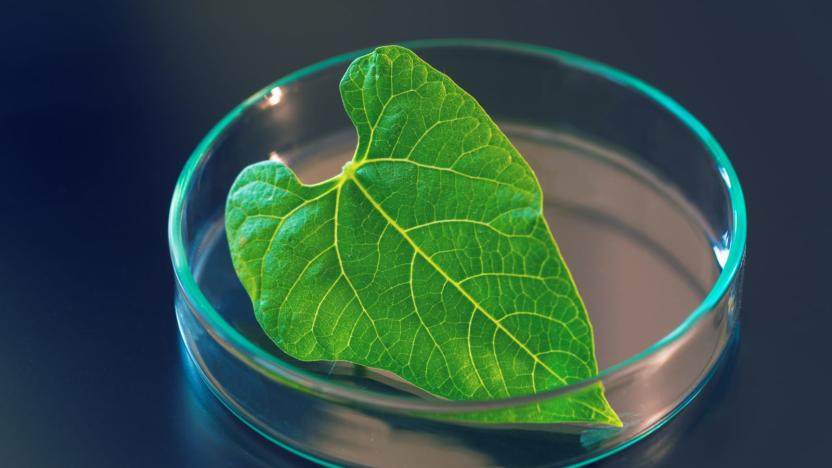artificialphotosynthesis
Latest

Researchers create hydrogen fuel with artificial photosynthesis
Scientists all over the world have been attempting to recreate photosynthesis in the lab in hopes of being able to mimic the process to create fuel. Now a team of researchers from the Department of Energy's (DOE) Brookhaven National Laboratory and Virginia Tech have figured out the secret behind a man-made molecular system or a "supramolecule" that can do the job well. Their lead researcher originally created two supramolecules a few years ago. Both of them can perform the processes needed for photosynthesis to occur: absorbing light, separating and transporting electrical charge and catalyzing the reactions needed to produce hydrogen that plants use to turn carbon dioxide into glucose. However, one was more effective than the other, so the team performed experiments to figure out why.

Panasonic Photosynthesis System converts carbon dioxide to organic material with plant-like efficiency
Greenery may fulfill a superficial need to improve the landscape aesthetic, but plants play a much more critical role in regular life function, converting carbon dioxide to oxygen through a process called photosynthesis. Panasonic is among the companies attempting to replicate this natural procedure through artificial means, and it looks like the Japanese electronics maker is well on its way towards a viable solution. Presenting at the International Conference on the Conversion and Storage of Solar Energy this week, Panasonic announced the development of an Artificial Photosynthesis System, which uses a nitride semiconductor to convert water and carbon dioxide -- a byproduct of factories and power plants -- into an organic material called formic acid, which is used in the manufacturing of dyes and fragrances. Covering the planet in formic acid wouldn't necessarily represent progress, but assuming demand isn't exceeded, it certainly beats CO2. Best yet, Panasonic claims that the system converts the substances at plant-like efficiency rates, or 0.2 percent. Hit up the PR after the break for a more granular look at the company's creation.

UTexas researchers develop organic battery, aim for week-long use in smartphones
Christopher Bielawski, a brilliant mind working at the University of Texas at Austin, had this to say about his newest discovery: "I would love it if my iPhone was thinner and lighter, and the battery lasted a month or even a week instead of a day; with an organic battery, it may be possible." Anyone that has ever owned an iPhone (or a smartphone or any sort, really) can grok just how bold those words are, but according to Mr. Bielawski, "we're now starting to get a handle on the fundamental chemistry needed to make this dream a commercial reality." At the center of this potential revolution is a newfangled organic battery recently detailed in the journal Science, but just as important is the artificial photosynthesis that the research also touches on. Bielawski and colleague Jonathan Sessler have seemingly figured out how to create an electron transfer process that can proceed in the opposite direction, with this forward and backward switching of electron flow opening up new avenues for the historically stagnant battery innovation market. Granted, these guys have yet to demonstrate that the process can occur in a condensed phase, so actual commercialization is probably a century millennium or two out, but hey -- at least our list of "awesome thing that'll probably never happen" has grown by one.


